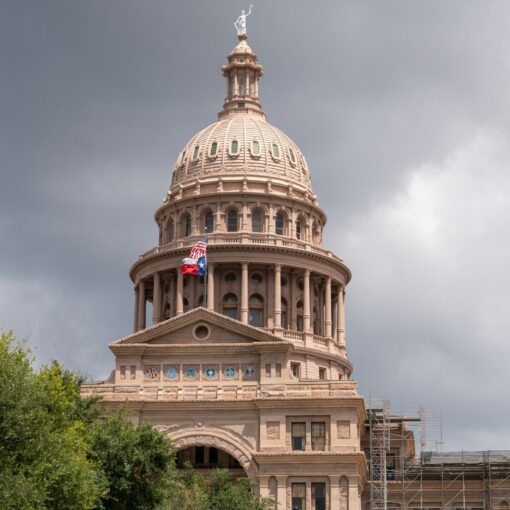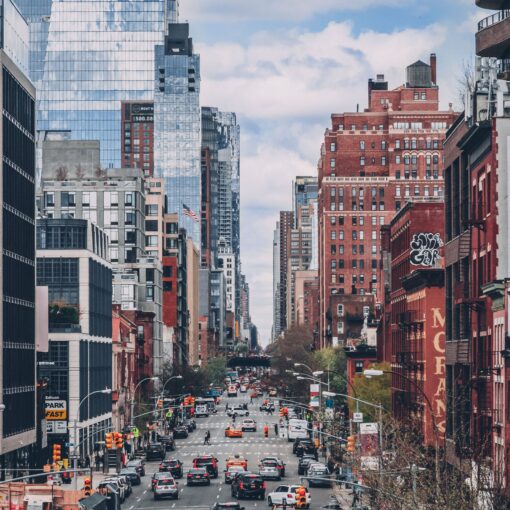It is an extremely challenging time for cities. With the novel coronavirus COVID-19 infiltrating cities across the U.S., leaders and staff are working around the clock to develop and implement policies aimed at slowing the spread of the virus, adequately caring for those infected, providing a basic level of services to residents and facilitating safe and effective work conditions for “essential” workers. As the public figures with the most intimate understanding of their residents’ needs, city leaders and policy-makers are showing admirable and needed leadership in this global emergency.
COVID-19 and climate change are both urgent crises, and plenty has been written already about the similarities between the two, with much more sure to come as lessons from the pandemic emerge. I hesitate to draw early conclusions about the connection between global emissions, climate impacts and our current pandemic conditions. However, this is a moment of opportunity to marry the best of city climate policy and virus response. While big policy conclusions, connections and questions will continue to be debated, right now there are important observations to be made and potential lessons learned for city policymakers about overlapping approaches from past emissions reduction policies, current COVID-19 policy and future climate policy after the virus has subsided. This post explores some of these intersecting policy areas.
People-centered policy
Though “flattening the curve” requires massive and coordinated collective action, cities are still at their cores thousands or millions of people with individual and evolving needs. Now more than ever, city officials are required to be responsive to their citizens in real time. Some city policies have responded to significant job loss by staying evictions for a period of time in order to alleviate the potential fallout of the virus and its economic consequences. While this particular policy is not meant to mitigate climate change, the approach – enacting policy that has a direct benefit for city residents – is applicable in developing climate policy as well. In a recent example that is more directly related to climate change, residents of many dense cities are pointing out that they are unable to keep six feet of distance between one another on narrow sidewalks and in crowded public spaces. In response, a movement has developed to close some streets to vehicular traffic and open them up to pedestrians and cyclists. Philadelphia closed Martin Luther King, Jr. Drive to traffic, New York City is considering closing “up to two streets per borough,” and a city council member in Oakland, California, began soliciting input on street closures there. These street closures might act as pilots for opening up streets to pedestrians in the future, both as a public space amenity and to alleviate vehicle emissions.
Transportation
- Fare-free public transit. Late last year, cities like Kansas City, Missouri began experimenting with fare-free transit; that is, with offering public transit options free of charge to anyone who wanted to ride them. The move is somewhat of a win-win for climate and equity, as it improves the economics of taking transit, thus reducing vehicle miles traveled and their associated greenhouse gas emissions, and centers the needs of lower income communities who are more likely to use transit than those living in wealthier areas. Fare-free transit yields additional benefits in pandemic-stricken cities, as it allows transit riders to enter buses and other modes of transit without crowding near the driver or other riders to pay a fare. Transit is also critical to getting essential workers to their jobs.
- Facilitating bicycle travel. When COVID-19 began its infiltration into U.S. cities in early March, cities like New York saw a spike in cycling as commuters and others shifted away from the close quarters of the subways. Even now, as state and local governments issue directives to keep people in their homes, cycling can play a significant role in essential workers’ commutes and in transporting the many more deliveries Americans are having dropped at their doors. In developing temporary cycling policy meant to help citizens ride out COVID-related shutdowns, there is plenty to be learned from the decades of cycling advocacy that have come before. Two important points: first, prioritizing cyclist safety is paramount, both to encourage more cycling and to limit visits by cyclists to already overburdened emergency rooms. Cities can put down temporary barriers to protect bike lanes relatively easily. Second, when designating essential businesses that continue to operate during more restrictive “shelter in place” conditions, bike shops should be put on the list right along-side automobile repair shops. Such a designation allows bike shops to continue servicing the cyclists using their bicycles for essential travel.
- Micro-mobility (e-bikes & scooters). The jury seems to be out on the role of shared bikes and scooters while cities are otherwise on near-lockdowns. On the one hand, bikes and scooters keep users more than the recommended six feet from one another while riding, and can facilitate vital trips made by medical professionals, essential workers and those who need critical services. On the other, they can serve as a vector for the virus. On this point, each city will need to make its own determination as to the costs and benefits of permitting micro-mobility companies to continue operating during the pandemic. The key here will be in facilitating the orderly return of these companies when circumstances go back to normal, to the extent cities have determined them to advance their climate and transportation goals.
Single-use plastics
The available information is similarly mixed when it comes to the potential for reusable items like travel coffee cups and shopping totes to transmit the infection. Companies like Starbucks have temporarily stopped serving beverages in reusable cups provided by their customers, and Boston and New Hampshire have temporarily banned reusable shopping totes, requiring the use of the same kind of single-use plastic bag recently banned by cities and states around the country. City policymakers should seek the guidance of experts in determining the potential for these reusable items to act as vectors for the coronavirus. While reintroducing single-use plastic bags in a city that has banned them is undesirable from an environmental perspective, it is more important to make sure that any such change in policy is temporary, and that it is widely expected that single-use plastic items will be banned once again when the threat of the virus has passed. The current pandemic should not serve as an opportunity for plastic bag ban opponents (or plastic or fossil fuel corporate interests) to permanently undo bans that are already in effect.
Nature
With the temporary loss of many of our cities’ “third places” as residents are advised to stay mostly in their homes, natural areas take on an increased significance. Parks, hiking trails and other public outdoor spaces provide needed room for residents to exercise and get fresh air while maintaining six or more feet of distance from one another. Nature also plays a significant role in easing the impacts of climate change, including by absorbing local air pollutants and by mitigating the urban heat island effect. While city residents are under orders to limit gatherings and avoid indoor public spaces, keeping natural areas open, accessible and clean, with clearly communicated rules around handwashing and maintaining distance from others, can help alleviate the isolation many residents are experiencing. Continuing to support the creation and maintenance of robust natural areas once COVID-19 has abated will have enduring climate benefits for communities, in addition to providing a needed escape for residents in case of future disaster.
Buildings
COVID-19 has significantly changed Americans’ work habits, with many now working from home. Not only is this causing a decrease in transportation emissions, but building energy needs have changed as well. During this period of slowdown or shutdown, city leaders should encourage commercial building landlords to adjust building controls to account for lower building occupancy. Longer term, more Americans may continue working remotely, at least some of the time, and building energy needs will continue to evolve. City policy could require building owners to optimize building energy use, or could even incentivize employers to offer remote work options to help reduce building and transportation emissions.
What does economic recovery look like?
While there are significant federal-level policy determinations to be made with respect to any economic stimulus or recovery package (e.g., should the federal government bail out fossil fuel companies, or launch a Green New Deal?), cities will also need to consider their own economic recoveries. With millions potentially put out of work by the virus and its subsequent shutdown orders, and economic activity largely slowed to a halt, local policies incentivizing green jobs can be a strong part of any city’s recovery. After the pandemic conditions end, cities might try enacting new building energy efficiency policies, which would require skilled, local workers to carry out, or incentivizing new and returning businesses to downtown, walkable areas near housing, offices or transit. On a more macro scale, cities should think about kinds of investment they lobby for from state and federal recovery programs. Cities could reap significant economic and climate benefits from federal or state investment in public transit (which is in trouble as a result of COVID-19), renewable energy and other carbon-mitigating public goods.
—
While these policy areas are somewhat disparate – transportation, nature, buildings, community engagement, equity and economic recovery – their through line is in the way they can support a city’s residents in the face of various crises. Progressive policies that advance social goods such as climate mitigation also build social resiliency into a city system. While the focus deservedly remains on protecting public health during the pendency of the COVID-19 crisis, it’s not too soon to think about how policies can synchronously address public health threats, reduce emissions and provide for a city’s recovery.





